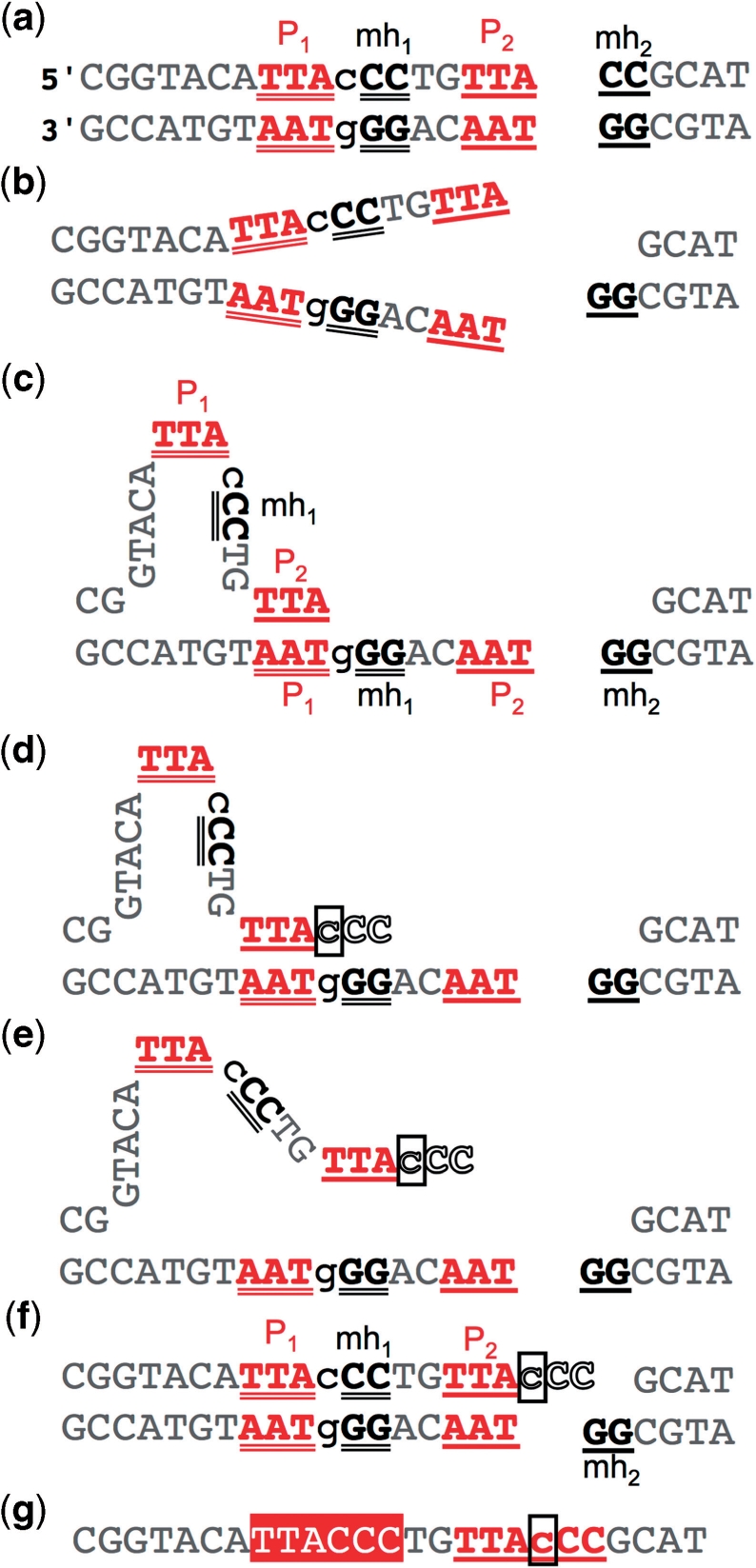Figure 5.

Loop-out SD-MMEJ produces repair products with direct repeats. Example is taken from Figure 4. Both strands are shown. Deleted bases are not shown. (a) Loop-out SD-MMEJ requires two short direct repeats. The ‘primer repeat’ (P1, P2; red) is located completely to one side of the DSB. The ‘microhomology repeat’ (mh1, mh2; black) spans the DSB. Notational convention is that P2 and mh2 are closest to the DSB. (b) The DNA double helix is unwound through P1. (c) P2 on the top strand base-pairs with P1 on the bottom strand. mh1 and P1 on the top strand are looped out. (d) A template-dependent DNA polymerase extends through the end of mh1. Newly synthesized bases are in white type outlined in black. The base that will form the net insertion is boxed and in lowercase. (e) The loop-out structure dissociates or is unwound. (f) P1 and P2 re-anneal as originally. This DSB end now has a single stranded 3′ overhang that is complementary to mh2. (g) The resulting repair product showing the net insertion and the direct repeat spanning the junction created by loop-out SD-MMEJ repair. (Compare with Figure 4b.) The part of the repeat that was present in the original sequence (white text on red) comprises P1, mh1 and the sequence between them. The part of the repeat containing the insertion (underlined, red) comprises P2, mh2 and a copy of the sequence between P1 and mh1. This convention is used throughout the remaining figures/tables.
